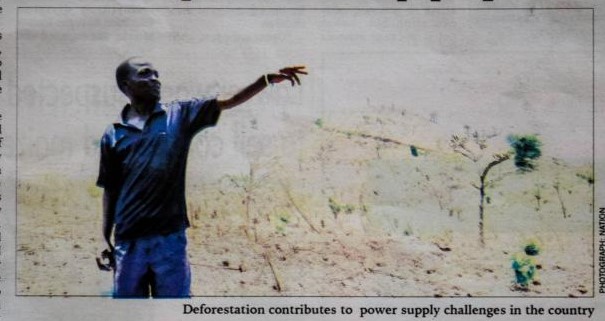
Environmental negligence in Lake Malawi’s tributaries remains one of the key factors affecting the hydroelectric power supply as water levels in the lake continue dwindling.
This is despite efforts by various stakeholders, including government, to address the environmental challenges the rivers are facing.
Over the years, the amount of power generated by Electricity Supply of Malawi (Escom) and now by the Electricity Generation Company Limited (Egenco) on the Shire River has continued falling due to low water levels in Lake Malawi.
Several rivers have dried up and can no longer feed the lake for improved water levels on Shire River, the sole Lake Malawi outlet, to operate the Nkula, Tedzani and Kapichira turbines at their combined capacity of 355 megawatts (MW) because of uncontrolled human activities such as farming along the banks.
However, the Ministry of Natural Resources, Energy and Mining says it is eager to ensure that trees are not depleted in the rivers’ catchment areas.
“That’s why we have the annual national tree planting season. For the past three consecutive seasons, our target has been 60 million trees. This is one of the interventions government put in place to arrest and reverse deforestation and forests degradation as well as reduce energy overdependence on solid biomass fuels,” explained Sangwani Phiri, spokesperson for the Department of Environment and Climate Change.
Malawi’s forests are disappearing at an alarming rate and according to the Department of Forestry, the country loses between 1.6 and 2.8 percent of its forestry cover every year.
Besides the tree planting exercise, other interventions include several legislations such as the National Forest Landscape Restoration Strategy launched in May this year, the National Charcoal Strategy (2017-2027), Forest Act of 1997, Energy Policy of 2003, Draft National Energy Policy of 2016, Energy Act of 2004 and Climate Change Policy of 2015.
“The National Forest Landscape Restoration Strategy is aimed at taking care of all landscapes where trees were planted but there is deforestation,” said Phiri.
He said the National Charcoal Strategy aims at addressing linked problems of increased deforestation and increased demand for household cooking fuel with defined and prioritised short-term, medium-term and long-term actions.
In May this year, government also launched the national tree survival campaign whose aim is to take stock of survival of trees planted in the country.
Besides government, other stakeholders such as Shire River Basin Management Programme are working on rehabilitating the degraded catchment areas within the Shire River and the rivers that flow into it.
The programme’s communications specialist Horace Nyaka said among the interventions being promoted are soil and water conservation technologies, rainwater harvesting technologies, agro-forestry and forestry interventions and conservation agriculture.
“The overall aim of promoting these technologies is to increase water infiltration within the catchments and also to reduce the sediment/silt load into the Shire River,” explained Nyaka.
Before the birth of Egenco, the public utility responsible for generating power, in January this year, Escom also engaged in various interventions such as planting of trees along the catchment and also giving free seedlings to surrounding communities to continue with the exercise.
“We were also civic educating communities on best practices in environmental conservation,” said Escom public relations manager Kitty Chingota.
Escom also launched the Plant a Tree to Keep Lights On Campaign as one of its efforts of restoring and conserving the environment.
Egenco chief executive officer William Liabunya said besides new interventions, they are also continuing what Escom had already started.
“Recently, we just partnered with a local non-governmental organisation (NGO) to buy and provide efficient mbaula [charcoal burners] to the communities. We have also partnered with the Shire River Basin Programme to run most of the programmes through them,” he said.
